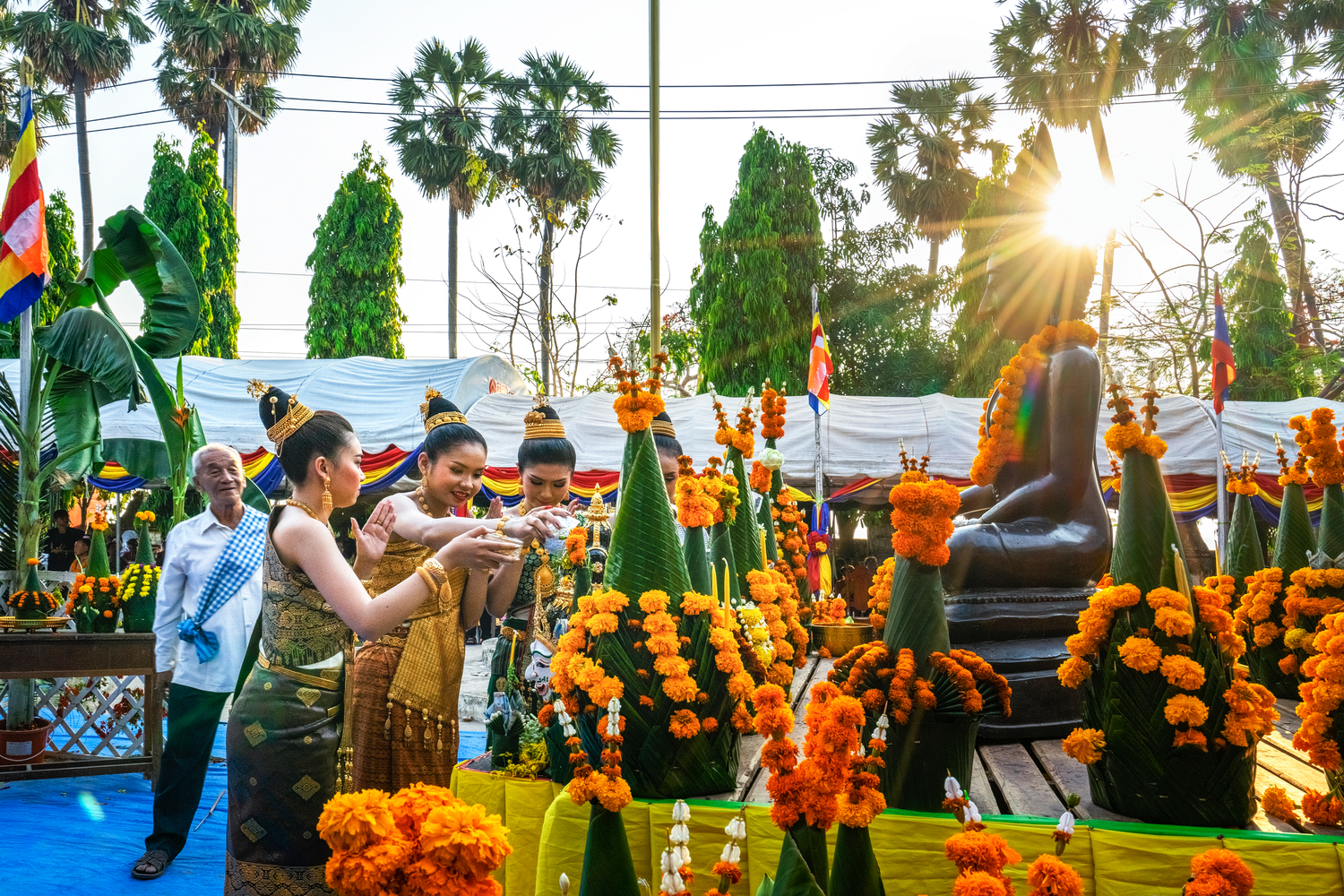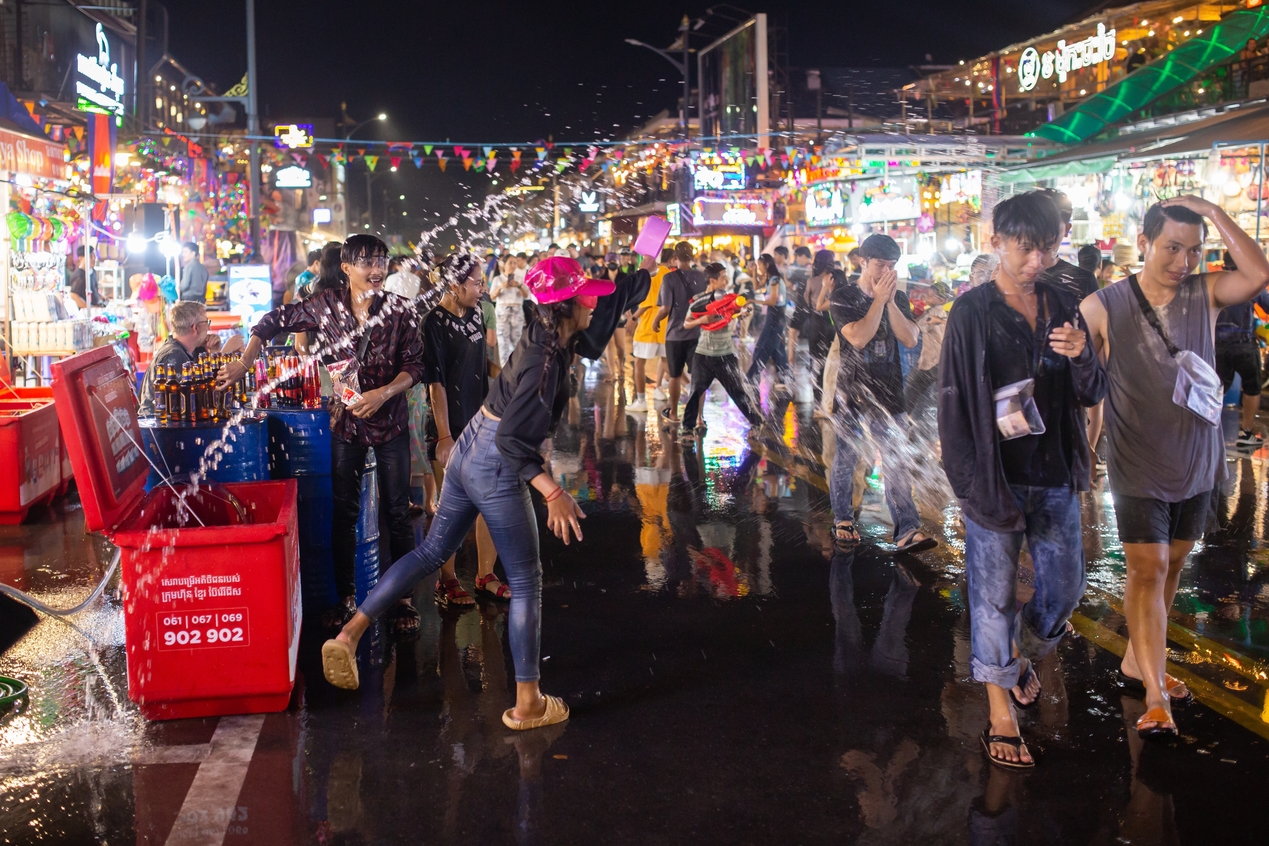Ngo Quang Minh
Every year, as spring gives way to summer and the dry season transitions to the rainy season, several Southeast Asian countries, particularly those where Theravada Buddhism is the state religion, eagerly anticipate their New Year’s Festival. It’s known as the Songkran Water Festival in Thailand, while in Laos, the celebration is called Bunpimay. Cambodians call it the Chol Chnam Thmey Festival. In Myanmar, it’s a national holiday known as Thingyan. While the names differ, the timing is identical, painting a picture of colorful cultural diversity, with varied history and customs in different countries across the region.

In Thailand, the Songkran New Year Festival is the most traditional and important event of the year, similar to the Lunar New Year in Vietnam. It usually takes place from April 13th to 15th on the Gregorian calendar. Thais prepare for the Songkran Festival as busily as Vietnamese people do in the days leading up to Tet. They focus on cleaning and decorating their houses, shopping for supplies, and cooking delicious traditional dishes. On the main day of the festival (April 14th), every family gathers and exchanges good wishes before visiting the pagoda to perform sacred Buddhist rituals like bathing Buddha statues with scented water, showing respect to the monks, and praying for good luck. The next day, Thai people visit their relatives and sprinkle scented water on the hands of grandparents and elders to express their love and respect for their family members.

After the ceremonial aspects, it’s time for a lively festival. People pour into the streets, and tourists join the festive atmosphere, as water is splashed on every street corner. With the belief that water will wash away fatigue and worries, dispel evil spirits, and bring vitality and good fortune, Thais splash water on each other to wish for well-being and prosperity. They splash water on visitors to strengthen friendly bonds. They believe that the more water that’s thrown on you, the more good things will come your way. Major cities like Bangkok, Phuket, Pattaya, Hua Hin, and especially Chiang Mai host vibrant entertainment activities, combined with street music festivals, dancers performing on mobile floats, and Songkran beauty pageants. Sometimes, elephants join this uniquely Thai-style water festival.
Also, in mid-April, Laos celebrates the Bunpimay Festival, which is somewhat more serene but leaves an equally impressive cultural mark. During the three-day celebration, Laotians flock to Buddhist temples to perform solemn rituals such as bathing Buddha statues and carrying water. They wear traditional clothes adorned with Senna splendida and Champa flowers, symbolizing the yellow color of the Buddha’s robes. This yellow also represents their wishes for good luck in the new year. They organize boat races and water games during the Bunpimay Festival, splashing water on plants, houses, worship items, livestock, and work tools as a way to cleanse the bad and pray for a healthier and more prosperous new year. The capital Vientiane, the ancient city of Luang Prabang, and the city of Vangvieng in the land of a million elephants are especially vibrant in these April days.

Cambodia also captivates tourists with its unique water festival, known as Chol Chnam Thmey, with “Chol” meaning “Enter”, and “Chnam Thmey” meaning “New Year”. This festival embodies the rich spiritual values of the people in this temple-rich land. Cambodians also organize street festivals to splash water on each other, replacing words of luck and harmony. They also organize clever and unique activities such as rice offering ceremonies, the building of stupas or mounds out of sand, and performances of graceful Apsara dances as a way to promote their nation’s Intangible Cultural Heritage, as recognized by UNESCO. But it doesn’t stop there. Street food festivals introducing traditional Khmer dishes such as stir-fried beef with tree ants, crab with tamarind and chili, and Khmer red curry add to the allure of their traditional New Year’s Day. The Khmer community in Vietnam also joyfully celebrates this traditional New Year.
Finally, one cannot forget the Thingyan Water Festival of Myanmar, with its origin story steeped in epic lore. The story tells how the gods Indra and Brahma argued over astrology and decided to bet, with the condition that the loser would lose their head. Indra won, but could not throw Brahma’s head into the sea because it would drain all the water, nor could he throw it on the ground as the earth would explode. Indra decided to give Brahma’s head to the Nats, the Gods who protect the Burmese people. The Nats took turns holding Brahma’s head. On their traditional New Year’s Day, Brahma’s head is transferred from one Nat to another. On this day, Burmese people send their best wishes to the guardian deities, believing they were sent down to earth to protect human life. During the Water Festival, folk beliefs combine with fun activities enjoyed by people of all ages and genders, further strengthening the warm feelings of locals and visitors. Also noteworthy in Myanmar is the Hot Air Balloon Festival, which usually ends in mid-April in the ancient city of Bagan. Tourists can combine the Thingyan Festival with a visit to Bagan to see hot air balloons fill the dawn sky as they fly over thousands of beautiful old temples and pagodas, like a scene from a fairy tale.
Whatever their name, these festivals are rich in Asian character. Whether in Thailand, Laos, Cambodia, or Myanmar, these vibrant and appealing New Year celebrations carry profound meaning.










